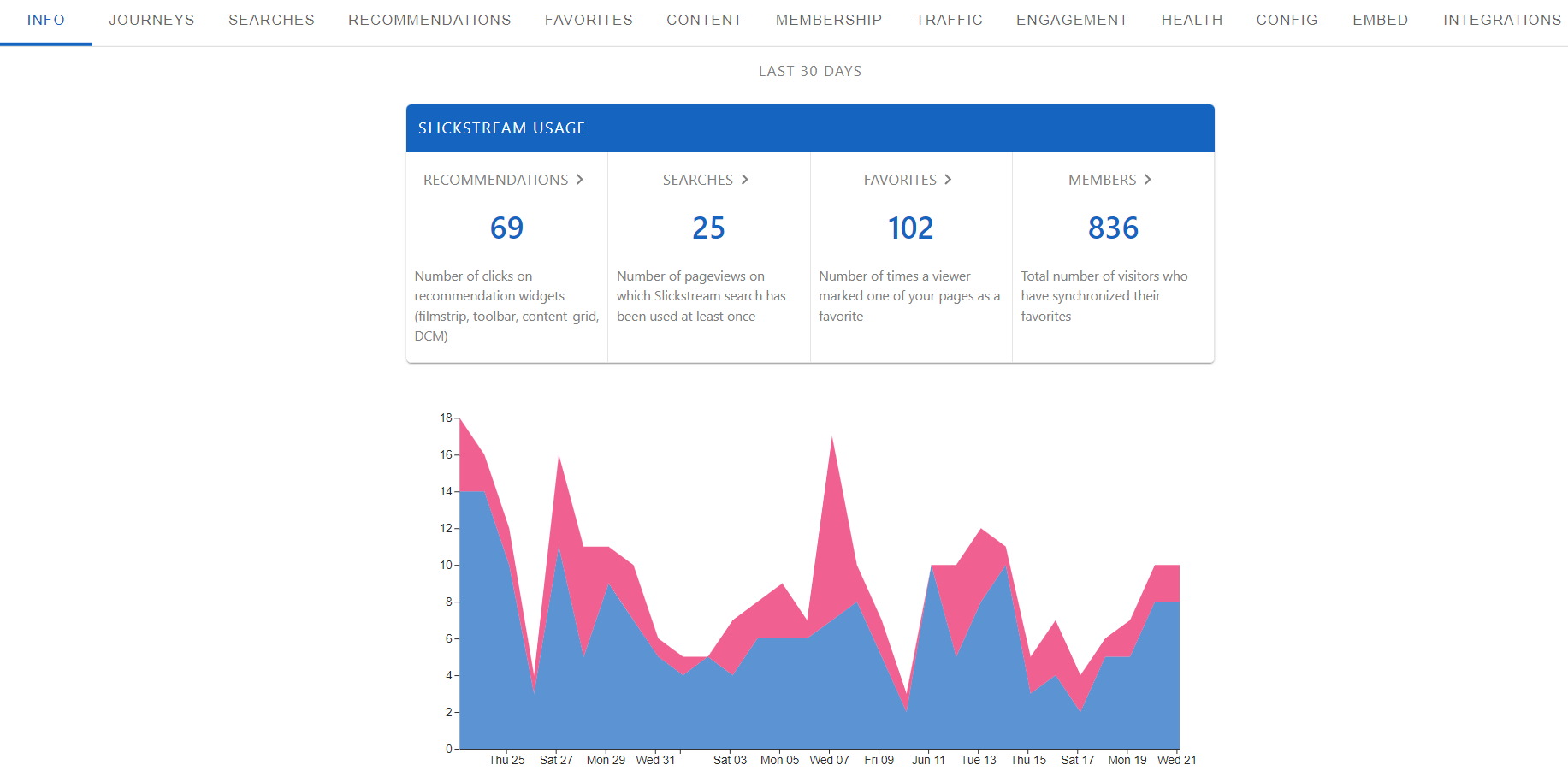Published: This is the date the page was first published.
Active Time: This is a measure of how much time engaged visitors are actively consuming content. Slickstream found that session duration (as reported by Google Analytics, for example) is a poor measure because this data can be heavily skewed when, for example, someone opens a webpage and then just leaves it open. Since we are deeply integrated in the operation of the page, we monitor all user activity -- clicks, scrolls, etc. We define active time as the time when users are actively interacting with a page. We do this by counting 10 second intervals in which the user has clicked or scrolled at least once during that interval. So, for example, for an activity time of 90 seconds, the user may have had the page open for 5 minutes, but there were only 9 10-second periods in which they appeared to be active. The value in the Content table is an average of the activity time spent by visitors on each particular page -- not their total session if they visited other pages. Note, however, that we omit from this average calculation viewers who never engaged at all -- i.e., never once clicked or scrolled. These are what we call "immediate bounces". (Not to be confused with "bounces" which is how Google Analytics refers to viewers who visit only one page during the session -- we call those "single-page sessions".)
Widget Clicks: This is the count of clicks on a Slickstream widget that result in another pageview. Clicking on search results, recommendations or game links (the link to another page that is revealed after the game is completed) all result in a subsequent pageview and are counted here. The favorites widget (hearts) do not count as clicks -- in that they don't result in a new pageview when someone adds a page as a favorite. However, if they go to a new page when reviewing their list of favorites, that does count as a widget click.
Link Clicks: This is the count of clicks on a page that lead to another page on the site. This does not include widget clicks. For example, if someone clicks on the "Home" link in a banner to get to the home page, that would be a link click. Or if there is a hyperlink inside a post to another post on the site, that would be a link click if and when someone clicks that link. Note that the total number of pageviews on a site is the combination of several things: initial pageviews (i.e., the first pageview from someone arriving from Google, Pinterest, or just entering a URL into their browser), link clicks (additional pageviews when a viewer clicks on a link), widget clicks (additional pageviews when a viewer clicks on a Slickstream widget), and browser actions (refresh, back, forward).
Clickthrough: This is the percent of visitors who clickthrough to another page using either Slickstream widgets or existing on page links.
Favorites: This is simply the count of total favorites all-time for the page. Slickstream may initialize the visual favorite count seen by readers on any given page to ensure they don't start at zero (this is configurable in your portal), but the count of favorites in the Content table does not include any initialized favorites and is a pure count of total user favorites all-time for a page.
Favorites per Pageview: This is a particularly useful reflection of visitor sentiment. Generally the raw count of favorites for a page tracks the total pageviews of the page and as such represents the general popularity of that page. However, normalizing favorites by dividing by pageviews results in a good metric of the visitors sentiment towards the content. For example, a page with a relatively low pageview count but a high percentage of favorites per pageview is likely a page that is genuinely well liked, even though it may not be that popular. This is often an indication of a page that may well be worth promoting as it is likely to be well received.
Immediate Bounces: The percentage of pageviews where the visitor did not scroll, click or engage with the page in any way.
Revenue and RPM: Header bidding is an open protocol that Slickstream monitors that provides real-time information about the ad auctions taking place on your pages. This
blog post describes this in detail. Header bidding numbers tend to understate actual values as some ad auctions are completed over other protocols, but we've found that the header bidding data is generally valid for comparing revenue performance between pages.

